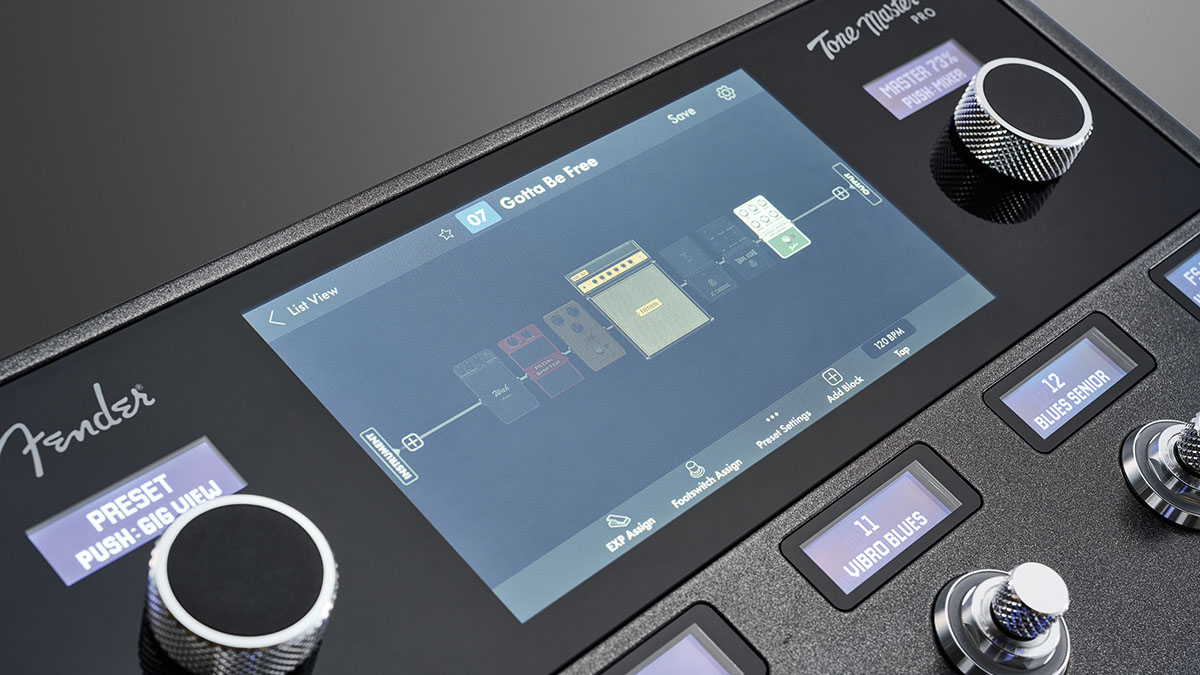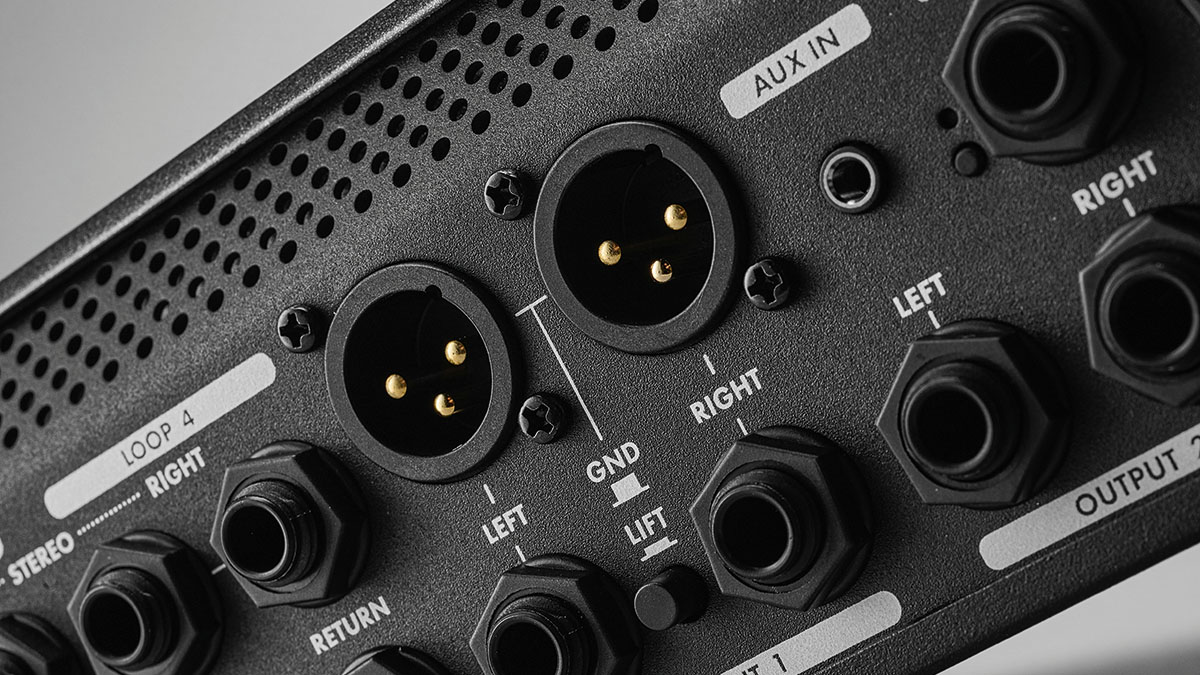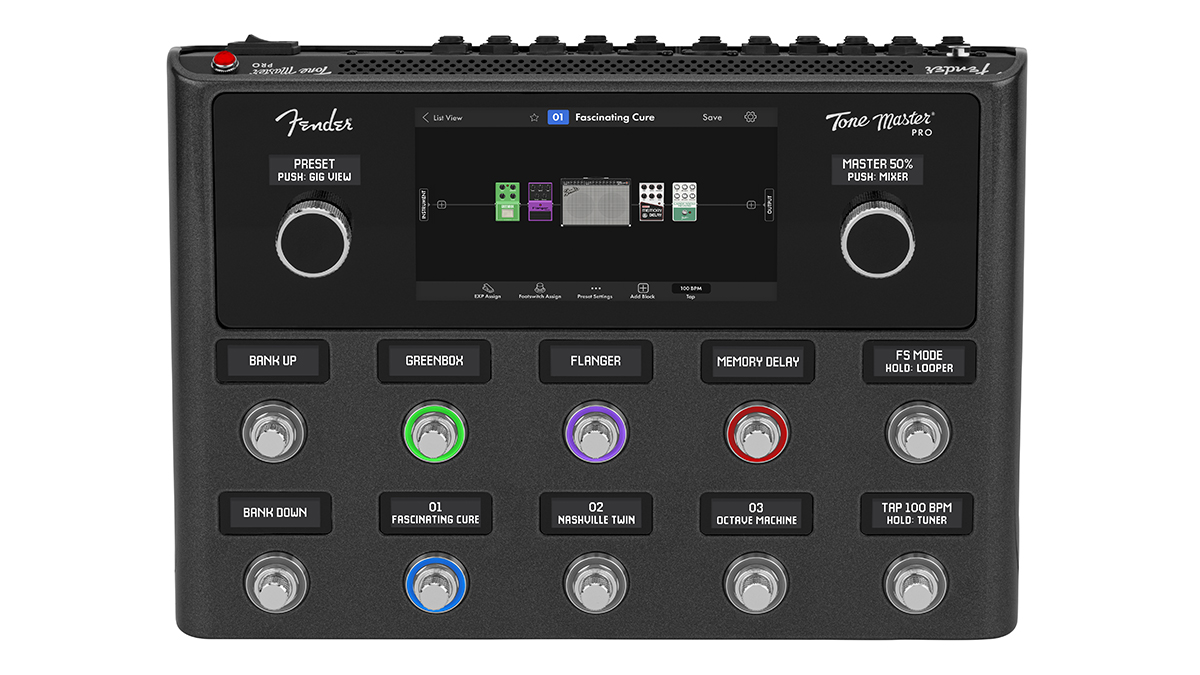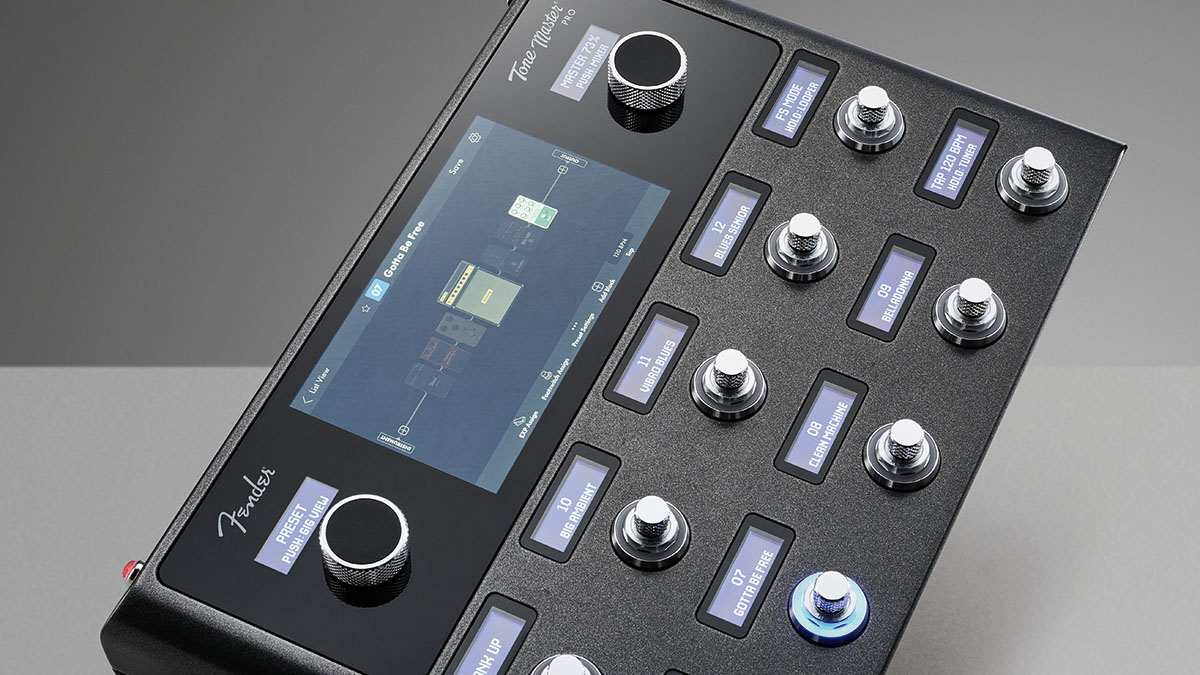Guitar World Verdict
Fender might be late to the amp modeling floor party, but that slow start pays off with a unit that is quite possibly the best in its class and price point.
Pros
- +
Classic Fender amps and a whole lot more.
- +
First officially licensed model of the EVH 5150 III head.
- +
Solid build and so well designed – this is easy to use.
- +
Brilliant touch screen display.
- +
Rear panel has all the connectivity you’re ever need.
Cons
- -
Doesn't do profiling but could that be an update in future?
You can trust Guitar World
Before Fender made guitars, they made amplifiers, with a heritage stretching all the way back to the ‘Woody’ designs of 1946 and even further, if you count the amps Leo made under the K&F brand during his short partnership with Clayton ‘Doc’ Kauffman.
Ever since, the company that can arguably claim to have invented the first proper guitar amplifier has continued to innovate, not just with valves, but solid state and digital technologies too.
Fender’s first modeling amp, the Cybertwin, wowed everyone when it appeared out of the blue in 2001, and its ongoing heavy investment in digital has paid off with other successes like the affordable Mustang and, more recently, the astonishing Tone Master range – which recreated some of Fender’s classic black-panel era designs, leveraging the latest heavy-duty digital signal processors, with no menus or presets.
Now, Fender have once again caught everyone by surprise with their first entry into the professional modeling preamp market, the Tone Master Pro.

First of all, it looks as smart as you’d expect from Fender. There’s a large full-color touch screen flanked by two sizable control knobs; below it are 10 sturdy footswitches which also function as rotary encoders, with coloured illuminated surrounds and dynamic LED ‘scribble strips’.
On the rear panel, you’ll find all the connectivity you’re ever likely to need, with a single input jack and a combi jack/XLR mic/line input, four effects loops and three pairs of stereo outputs, including one on XLR.
There’s a pair of expression pedal jacks together with toe switch and external amp control sockets, aux in and headphones out, MIDI in and out/thru. Desktop connection for recording and editing is handled by a USB ‘C’ jack and there’s a micro SD socket for future software expansion.

There’s also Bluetooth for wireless music streaming from mobile devices. A miniature version of Fender’s well-known jewel power light sits over the mains input and power switch.
The 7” touch screen comes to life with vivid full-colour displays of the amps and effects. The left-hand control knob handles browsing and organising presets, while the right-hand knob is a master volume which also opens a mixer screen, displaying all the Tone Master Pro’s outputs and their status.
The sounds, which use the same modeling technology as the previous Tone Master amps, are stunning, with over 120 amp cab and effects models, including many classic Fender designs. There’s a selection of British and boutique amps, including the first officially licensed model of the EVH 5150 III Stealth head, while effects include all the most popular and cult circuits. There’s also a choice of 6,000 IRs for cabinet emulations.
Editing and creating presets is simply a matter of dragging and dropping components into the signal chain; tapping on an amp or effect zooms in on that item and the controls become editable by the rotary encoders built into the footswitches. It’s swift and great fun to use, with no long menus to get bogged down in.
The amount of processing power used to generate all these amazing sounds is huge; the Tone Master Pro has an eight-core processor, double that of its closest competitors, allowing for seamless preset changes with spill-over of reverb and delays if you want it.
There are over 500 preset slots, which can be organised into songs and setlists, while other extras include a 60-second looper and possibly the world’s biggest tuner display.

The Tone Master Pro doesn’t do profiling, though the presence of a mic/line input hints that it’s a tantalising possibility for a future software upgrade. The quality of the amp sounds is seriously impressive, however the thing that hooked us is how easy and intuitive the Tone Master Pro is to use.
Even without a manual, we were able to access and use practically everything within a few minutes. While competitors can come close with the quality of their amp models, the Tone Master Pro is way ahead when it comes to accessibility and being just plain fun and inspirational to plug into.
With plenty for space for future expansion, the price is identical to its closest competitors, so right now, we reckon Fender’s Tone Master Pro is the one to beat.
Specs
- PRICE: $1,699/£1,649
- TYPE: Digital amp modeler and multi-effects pedal
- DIMENSIONS: 288mm (w) x 149mm (d) x 81mm (h)
- WEIGHT: 1.98kg / 4.35lb
- CABINET: Alloy/steel
- PRESETS: 504 User pre-set patches, over 125 amp/effects models
- CONTROLS: Navigate/mode knob, master volume/mixer knob
- FOOTSWITCH: 10 assignable footswitch/rotary encoders
- CONNECTIONS: Guitar in, line/mic in, effects loops x 4, 3 stereo outputs on jack and XLR, aux in, headphones out, MIDI in/out/thru, expression pedal x 2, toe switch and amp control, Micro SD (for software expansion), USB ‘C’
- POWER: IEC mains connector
- RANGE OPTIONS: The FR-12 and FR-10 full-range powered cabs sell for $549/£519 and $499/£469, respectively
- CONTACT: Fender
Nick Guppy was Guitarist magazine's amp guru for over 20 years. He built his first valve amplifier at the age of 12 and bought, sold and restored many more, with a particular interest in Vox, Selmer, Orange and tweed-era Fenders, alongside Riveras and Mark Series Boogies. When wielding a guitar instead of soldering iron, he enjoyed a diverse musical career playing all over the UK, including occasional stints with theatre groups, orchestras and big bands as well as power trios and tributes. He passed away suddenly in April 2024, leaving a legacy of amplifier wisdom behind him.
“If you’re a young guitar player, that’s money well spent”: John Mayer names the pedal he thinks every young guitar player should consider buying
“An effortless way to customize your TONEX pedals for the stage”: IK Multimedia answers players’ prayers and gives its best-selling TONEX units their biggest upgrade to date – a dedicated editor












